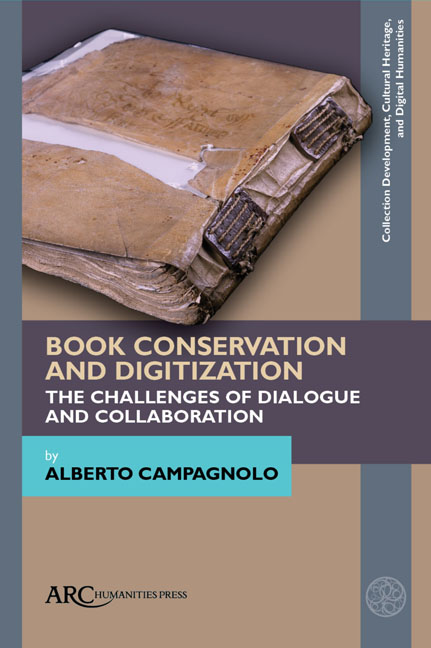Chapter 3 - Conservation towards Large-Scale Digitization at the Vatican Library
Published online by Cambridge University Press: 20 November 2020
Summary
THE VATICAN LIBRARY, ever since its foundation in the mid-fifteenth century, has had as its primary tasks the protection and preservation of its collections, while also making them freely available to scholars. These cardinal concepts have been easily adapted to the new technologies for greater dissemination and preservation of the Library's cultural heritage.
Already in the nineteenth century, faced with the concrete danger of being unable to stop the ongoing deterioration of the palimpsests that had been treated with Gallic acid in order to read the undertext, photographic techniques were selected as a means to at least fix in time the status quo of the text of the most damaged manuscripts. At the beginning of the twentieth century, the internal photographic laboratory was formed, leading to the creation of a new professional figure that would develop over time. Due to the tragic circumstances of the first half of the twentieth century in Europe, the creation of photographic surrogates acquired a supplementary function: should the originals be destroyed, the images preserved in different venues could at least preserve the textual transmission for the future generations. With this purpose in mind, safe storage to collect microfilm copies of most manuscripts was created across the Atlantic Ocean. In 1975, the Vatican Library organized the interlibrary conference Conservation et reproduction des manuscrits et imprimés anciens, once again bringing to the forefront photographic surrogates of manuscripts and early printed books. In 1994, in collaboration with IBM and the Pontifical Catholic University of Rio de Janeiro, the Library took its first steps towards digitization, scanning a sample of 150 manuscripts taken from its most famous holdings. In time, the photographic campaign was gradually extended to the rest of the collections. At the dawn of this new century, a new technology is now expanding considerably the means to disseminate the Vatican's library heritage: the digitization and the publishing of the resulting images online through the web.
A Pharaonic Endeavour: The Complete Digitization of the Manuscript Holdings
The Vatican Library has planned to digitize all the manuscripts in its collections. This is a pharaonic undertaking, as there are about 82,000 manuscripts to digitize, the majority of which are bound in codex format.
- Type
- Chapter
- Information
- Book Conservation and DigitizationThe Challenges of Dialogue and Collaboration, pp. 89 - 96Publisher: Amsterdam University PressPrint publication year: 2020



